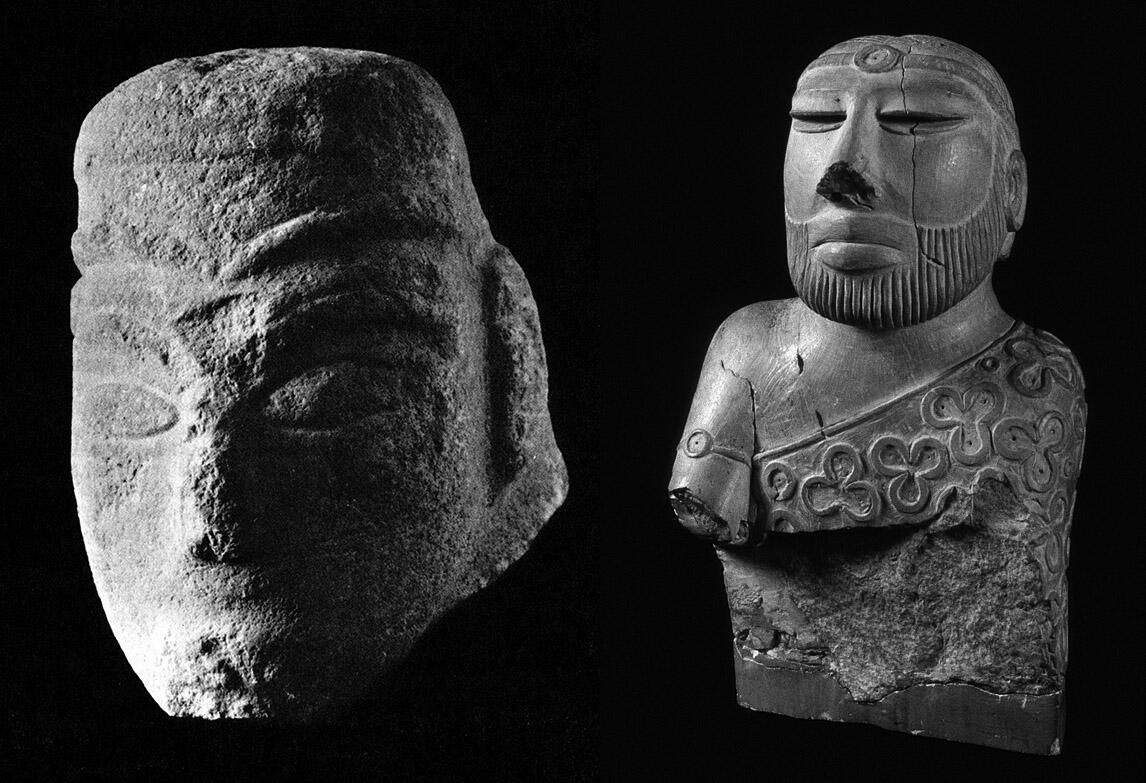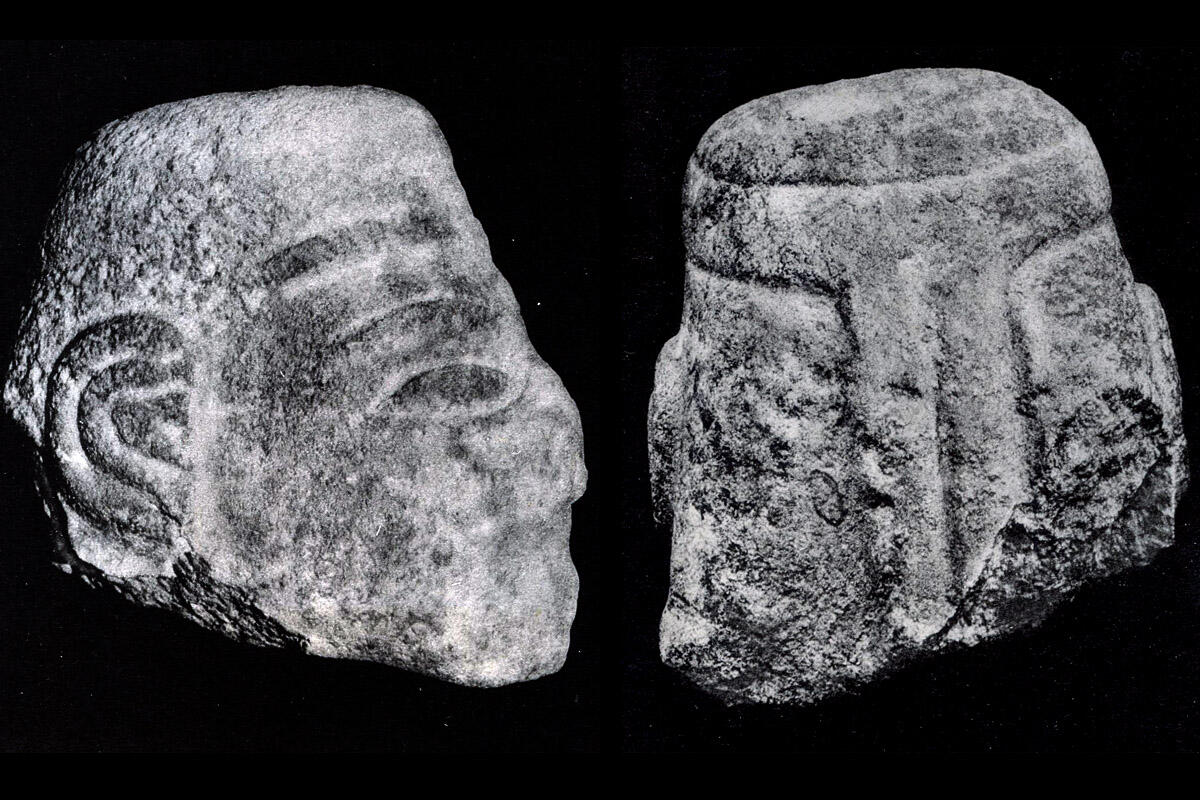What are the similarities between these this white limestone head found at Mundigak in southern Afghanistan and the so-called "Priest King" from Mohenjo-daro?
Massimo Vidale offers a fascinating conjectural yet evidence-based discussion in his article A "Priest-King" at Shahr-i Sokhta? "Mundigak IV, 3, the context of the head found near the terraced building of Mundigak," writes Vidale, "is contemporary to Shahr-i Sokhta [in Iran] late Period III to Period IV (Phases 3 to 0, ca. 2200-1800 BC . . . [when] all the stone sculptures of the same model from Mohenjo-Daro were notoriously found in the uppermost and latest layers of the city's settlement, i.e. to late horizons grossly belonging (following the chronology established at Harappa) to Harappa 3C period, ca. 2200-1900 BC (Kenoyer 19901, 1991b) " (pp. 5-6).
In other words, there is temporal continuity among this type of bust, which may speak of elites from the Kandahar-Helmand region including Shahr-i Sokhta having presence or ideological affinities with Indus beliefs or elites. "For which reason part of the people of different civilizations made and circulated across such an enormous area, and in the context of completely different societies, the same statuettes?" asks Vidale. While may not yet know many of the answers, there to be inescapable continuities between Mundigak and the Indus civilization of which there are probably more to follow in the coming years that will complicate our picture of the Bronze Age in the Bactrian-Indo-Iranian region.
Read A "Priest-King" at Shahr-i Sokhta?
Another article looks at another stone sculpture in this possible tradition Stone Sculptures from the Protohistoric Helmand Civilization, Afghanistan by George F. Dales.
Images
1. White limestone head, Period IV.3 [c. 2900-2400 BCE], and the "Priest-King" from Mohenjo-daro
2. White limestone head, Period IV.3 [c. 2900-2400 BCE], limestone head images from Jean-Marie Casal, Fouilles De Mundigak [Excavations at Mundigak], 1961).




